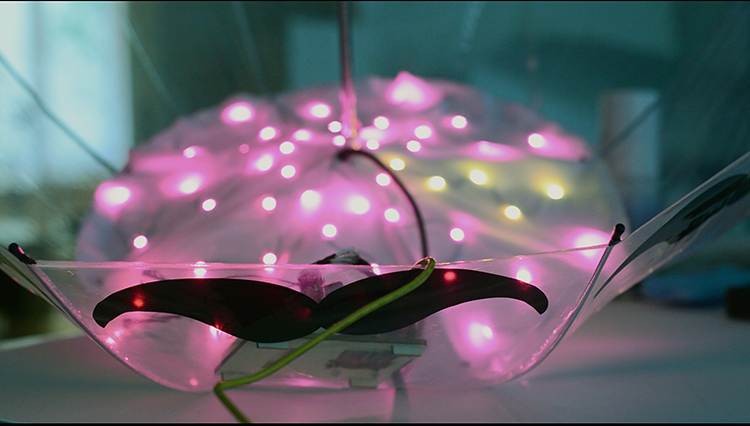The idea of creating a smart umbrella is not exactly original—recently everything from toothbrushes to public benches have been made into smarter versions of themselves. What is new, however, is that the designers of this umbrella, Copenhagen Institute of Interaction Design students Simon Herzog, Saurabh Datta, and Akarsh Sanghi, didn’t just design it in order to capitalize on a smart device that makes consumers’ everyday lives easier. This umbrella could actually help save the environment.

Outfitted with a plethora of sensor technologies, the umbrella can measure nitrogen dioxide and carbon monoxide, and includes a system of LED display lights that light up in different colors and patterns depending on what types of gases are more prevalentand how much pollution is in the air at any given time.
As if that’s not already enough, the umbrella can also connect to a Wi-Fi network and share the data it collects about local air pollution to a larger cloud network for the purpose ofmapping out air pollution. The end goal of all this is to give scientists a much clearer idea of where, when, and in what quantities pollutants are in the air.

Being wonderfully idealistic college students, Herzog, Datta, and Sanghi are not looking to profit from their creation (yet). Instead, they want to keep it open-source so that as many people as possible will be willing to use the umbrella to collect and share air pollution data in order to help efforts to stop air pollution. Herzog said, “I think the concept of people collecting data, of being a node in crowdsourcing data for the greater good, is absolutely valid and this is just one of the many applications.“
It may seem like an optimistic goal, but crowdsourcing has been used successfully to fund many projects, so it is entirely possible that it could be used as a way to gather data that would benefit all of us if the project is successful.
Here’s a video of the students explaining how it works:
Story via pfsk
By MaryElizabeth Koepele
Advertisement
Learn more about Electronic Products Magazine





